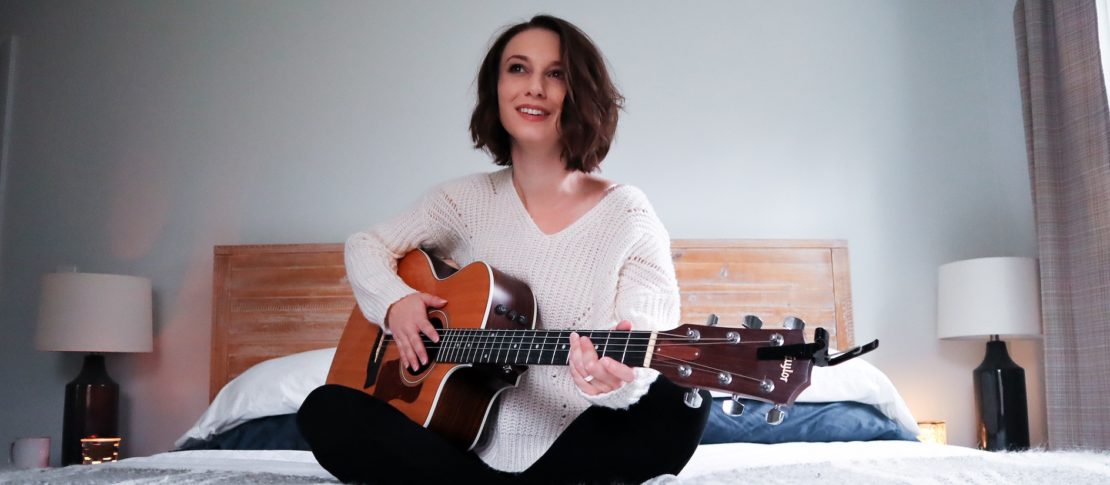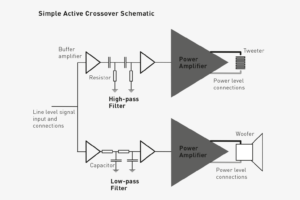
A Musician’s Guide to Lyric Writing
Does writing music and melodies comes naturally to you, but lyrics tend to be a sticking point? Lyrics may feel understandably tricky for musicians who have spent the majority of the lives or careers working on their instrument, performance, or music-writing craft.
This guide will show you the best strategies I’ve learned for finding interesting lyric ideas, capturing them reliably, and writing lyrics that hit a chord with your listeners. We’ll talk about how to organize your ideas, and ensure that you always have material to pull from. Your next songwriting session is about to be full of words and high notes! Let’s dive in.
Build a bank and invest in future songs
When lyrical inspiration is touch and go, the place to start is to build an Idea Bank. If you want ideas you can rely on when the well has run dry, your Idea Bank will always have your back.
Think of it like a song savings account for your future writes. (Secret: This is how pro writers never run out of ideas.) It’s the one place where you gather up all of your ideas as they come to you. And when you’re feeling the least inspired, it will be there, brimming with all sorts of raw material for you to use when the muse is MIA. Call it a hookbook, a list, or anything that makes the most sense to you: Your lyric idea bank is your goldmine of starting places when you need one the most.
Always be making new deposits into your Idea Bank
I call it an Idea Bank because you’ll need to treat it as such: Make more deposits than withdrawals, and aim to always be accumulating lyrical-idea wealth. Writers are an observant group. Pro writers are taking notes on those observations.
It’s these notes on your daily observations that are the little deposits you can put into your Idea Bank. This running collection of lines, titles, lyrical hooks, spontaneous poetry, and concepts will grow over time.
You can even treat it like a thought journal, writing down your own questions, musings, and things you’ve learned. Pop it into your Idea Bank. At this stage, we’re not going to determine if the idea could lead to a good song or a mediocre song. The goal simply to create a backlog of ideas you or a co-writer can run with when you’re in a writing session.
Constantly make lyrical deposits into your idea bank, based on your thoughts and observations of the world, and it will be there for you in every co-write, every late night jam on your instrument, and every inspiration-less day.
The best way to ensure your Idea Bank is overflowing
A huge strategy for building up your idea bank is to never be without a way to take notes. It’s the oooldest trick in the book. And for good reason. The most reliable way to come up with lyrics in a session is to ensure that, everywhere you go, always have a way to write down ideas when they come to you. You’ll want to always have a way to catch lyric ideas the moment they happen (or, as people say them out loud!)
You’re already finding yourself riffing in the car, while waiting in line at the coffee shop, at night when you’re trying to sleep, and everywhere in between. Ensure you have a tool at the ready to capture those ideas. Your Idea Bank is the reservoir that all of your ideas pour into as they happen. Never be without it!
Picking the perfect tool for your Idea Bank
Your Idea Bank can be anything. (As long as you’re not trying to keep track of it all in your head!)
I recommend just two things to consider when you’re deciding on a tool to use for your Idea Bank:
- It’s gotta be easy to use
- It’s gotta be inspiring to use
Can you pick it up and use it when you’re half asleep after an idea jut came to you in a dream?
Is it easy for you to travel with, or to carry throughout the day? Do you need it to back up to a cloud, or sync to your studio computer? Does it need a spiral binging to lay flat? Do you enjoy beautifully illustrated covers with inspiring quotes on them? All of these are important to consider when picking a tool to collect your ideas in. Because if it’s not easy or enjoyable for you to use, you won’t use it.
You may find that a combination of tools works best for you to jot down ideas quickly (like a voice memo app and a daily journal). If you are excited to fill it up with lyric ideas, then it’s the right tool for you!
Where to find your next lyric ideas
Alright, you’ve found your perfect tool to become your Idea Bank. You’re inspired to write some great new ideas in it. So where do lyric ideas live? Short answer: Just about everywhere! Lyrical ideas for songs are all around us. You can tap into them by learning to be observant; observant of the world around you, and of your own thoughts and experiences.
Here are some great places to look for lyric ideas and practice being observant:
- Listen to conversations on the street. Hear how people are really talking to come up with conversational lines and topics.
- Keep a daily journal to dig out your deep thoughts and feelings. A personal journal is like a cheat-code to finding your authentic voice. Here’s a resource on how to start a journal practice for songwriting.
- Use prompts to break out of existing patterns. Song prompts can stretch out limits and break us out of overly-relied upon songwriting habits. Here is my book of songwriting prompts to get you started.
Straight To The Heart Strategies for Writing Lyrics
Let’s fast forward a bit. You’re in the writing room. You have your track set up, musical ideas are coming to you easy-breezy, and you’re ready to start putting some lyrics down. You’ve picked an idea from your Idea Bank to run with, that feels like it fits the vibe of the moment.
Here are some strategies you can utilize when it comes to writing lyrics that make an emotional impact on your listeners:
Use sensory language
When writing lyrics, try incorporating visuals, sounds, smells, tastes, and touch into your lyrics. These are like lyrical shortcuts straight to your listener’s body and memory. It’s the now classic adage, given to us by the beloved and esteemed Pat Pattison, “Show, don’t tell.” For example: Rather than writing “I feel like my heart is breaking,” show what it’s like to have your heart broken.
In the example below, I’ve re-written this line and bolded the sensory language:
“I feel like my heart is breaking” —> “There’s a nine-hundred pound weight in my chest, pressing into each breath, the tears sting, and I hate that I’m losing my makeup down my face again.”
When you pull language from all 6+ senses to write your lyrics, you tap directly into your listener’s senses and memories.
Pay attention to patterns
When structuring your lines and stanzas, stay aware of the patterns you’re setting up. An element of catchy songs involves patterns and repetition. Patterns in lyrics (and music) help a listener to learn the song as they’re hearing it. It’s a great strategy to have someone singing along by the first chorus when they’ve never even heard the song before.
Stay aware of the patterns you’re setting up in your syllables, emphasis, and rhymes. As you write, ask: How many syllables are in the first line? The second line? Am I repeating them every two lines, or does each line have a different number of syllables? Where do my rhymes land in the verse, and where do they land in the chorus? Am I rhyming at all?
For a masterclass on repetition and establishing patterns, check out video discussion on Max Martin’s approach to songwriting.
Get conversational
A conversational tone to a lyric is a wonderful way to build human connection with your listener. It can make your song feel like they’re having a talk with their best friend, a loved one, or just another human that understands what they’re experiencing in this life. As you write, pay attention to the tone of the lyric. Does it sound the way people talk? A good exercise for testing this is to read your lyric out loud. If it sounds natural to say out loud, you’re on the right track.
The subject matter can be anything. Simply consider the way the line is crafted. Elements like tone, grammar, flow, and natural-sounding word parings can make a song sound conversational. For example, “I’m a paper butterfly caught in a carnival wind” is not something you’d hear someone say in everyday conversation, but if you did, you’d hear them say it like that. As opposed to, “The wind of the carnival has caught me, a butterfly, I am.” Sounds awkward, Yoda-like, or a bit like an actor delivering a soliloquy from a stage. Conversational lyrics can help your listeners feel like they’re involved with your song, rather than like they’re being talked at.
Break the rules. Experiment. Get weird.
Rules are meant to be utilized at the discretion of the writer. Learn the strategies that others are using, and consider them all tools in your toolbox to help you reach your goals. Pick and choose which ones you apply and when.
Turn them on their heads. Try things in reverse. Ask, “What if?” Experiment and play with the status quo. Taking risks in art is how trends are created. You never know what beautiful brand of weird you’ll come up with in your creative process.

![Room Adaption Unpacked [Part 2]](https://www.adam-audio.com/blog/wp-content/uploads/resized/2024/12/adam-audio-blog-learn-room-adaption-pt-2-thumbnail-300x200-c-default.jpg)